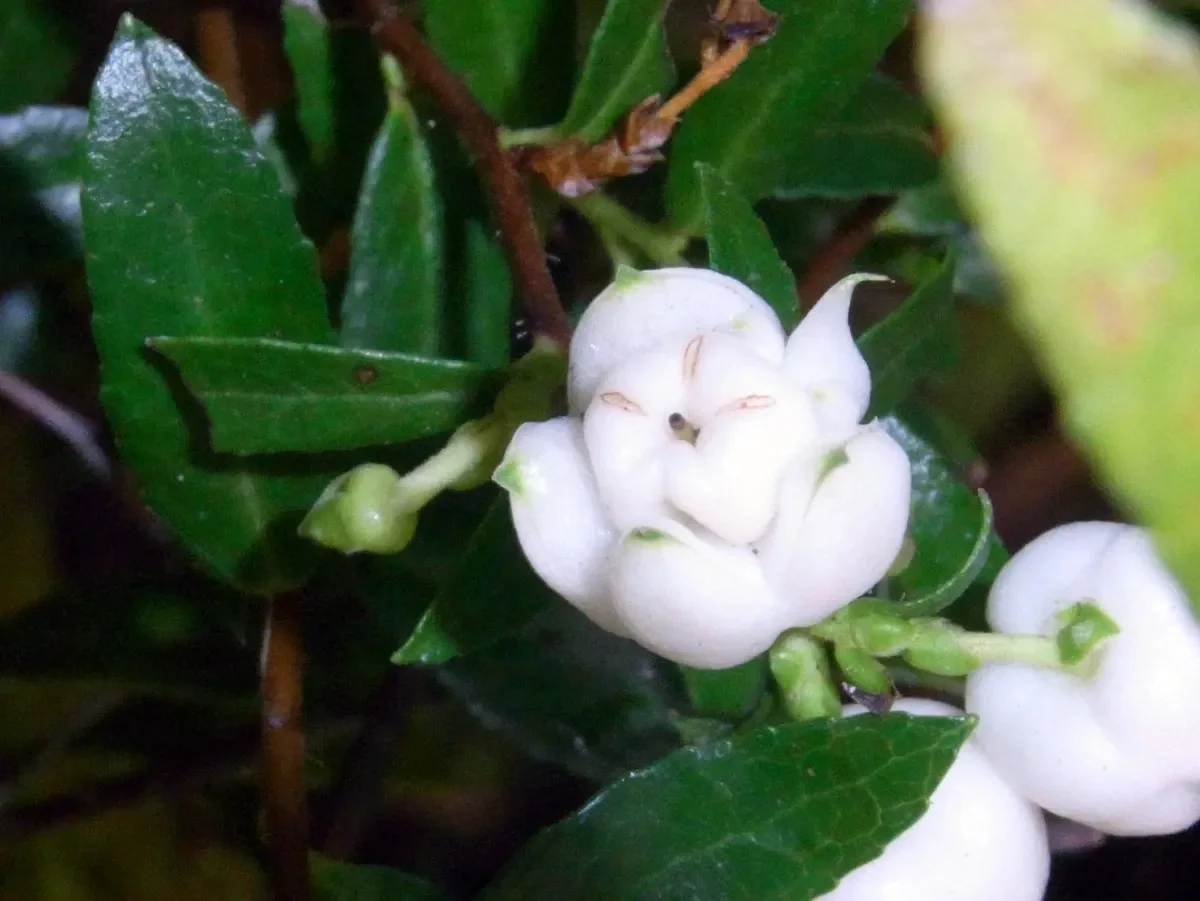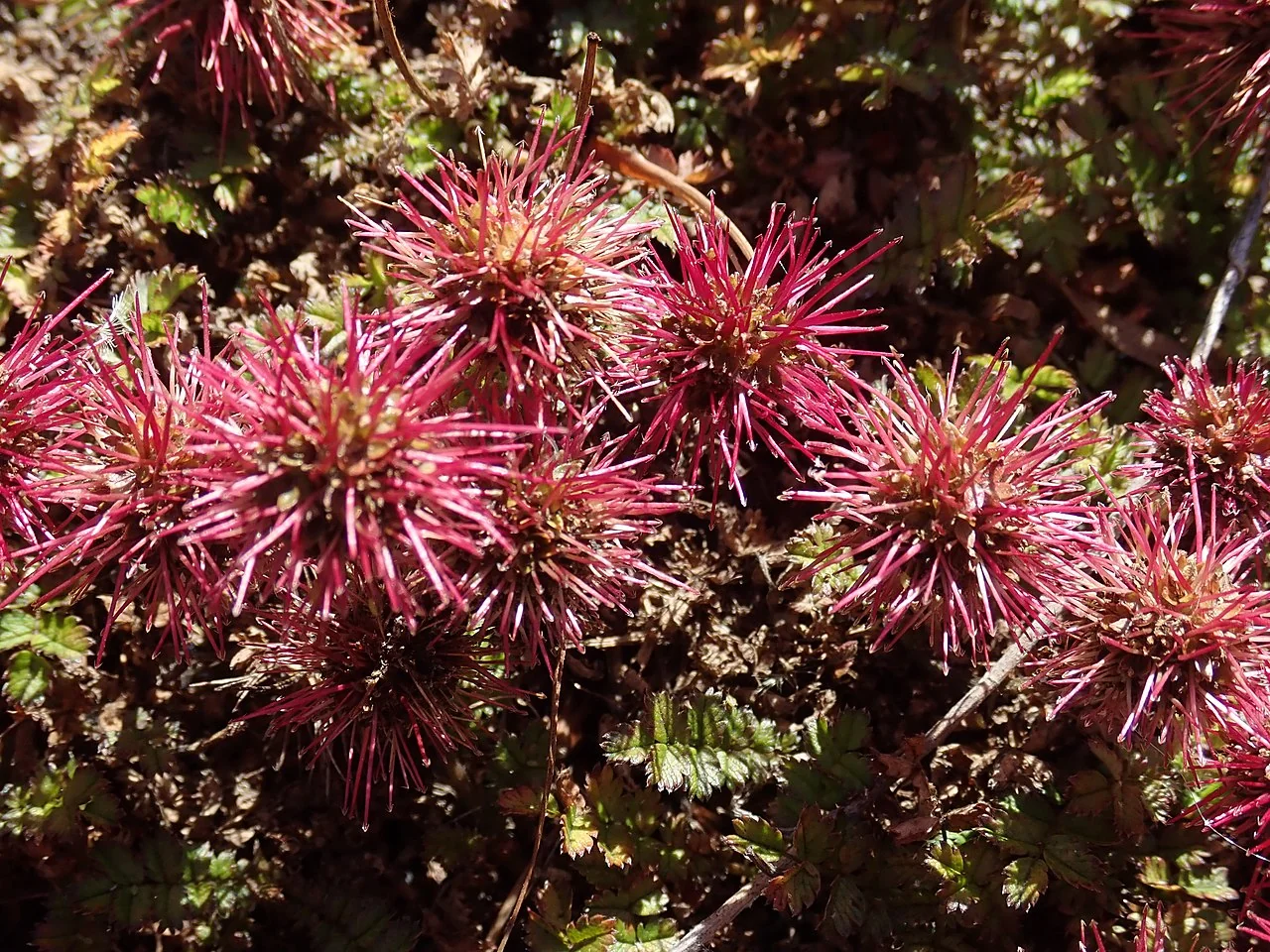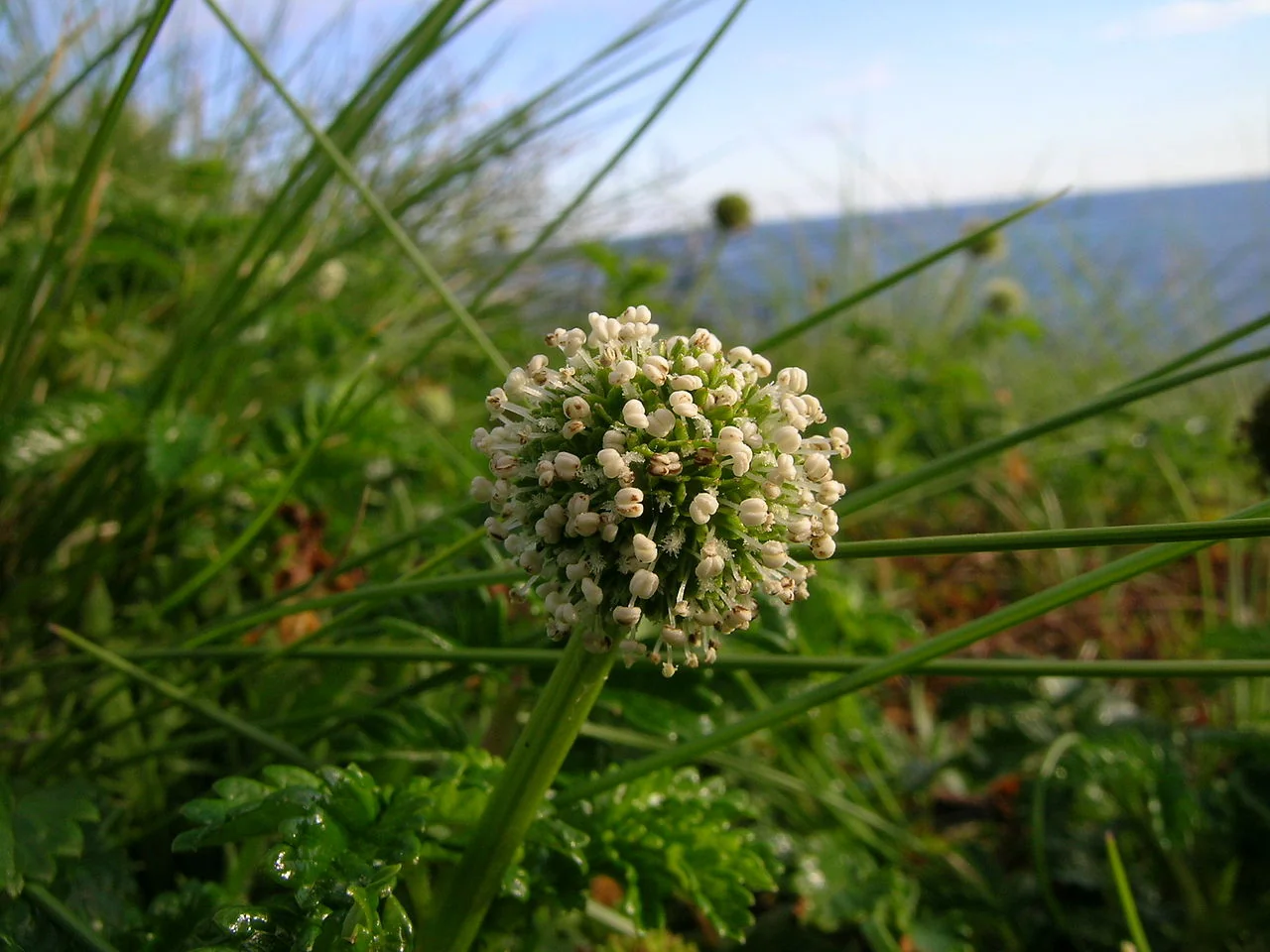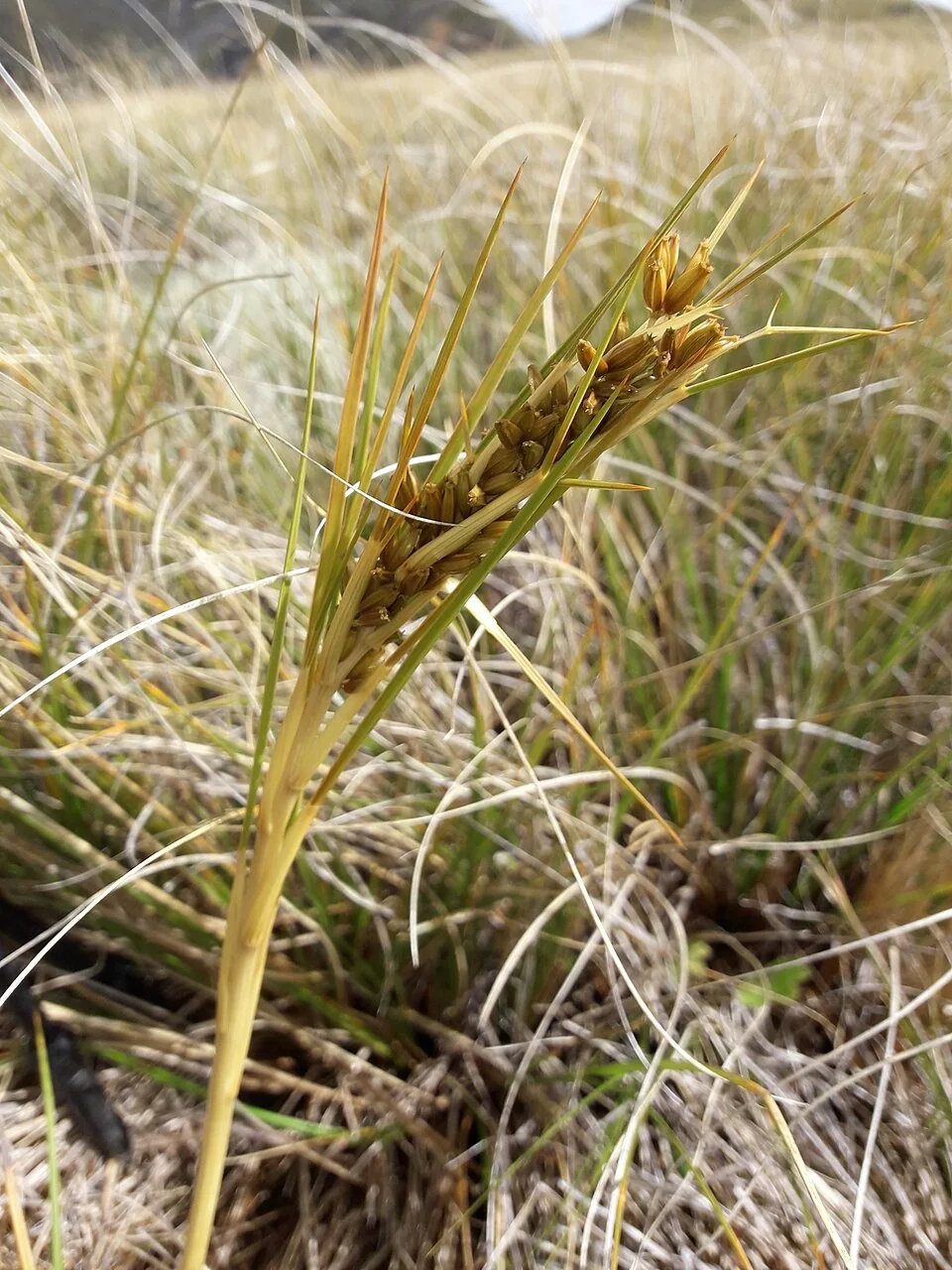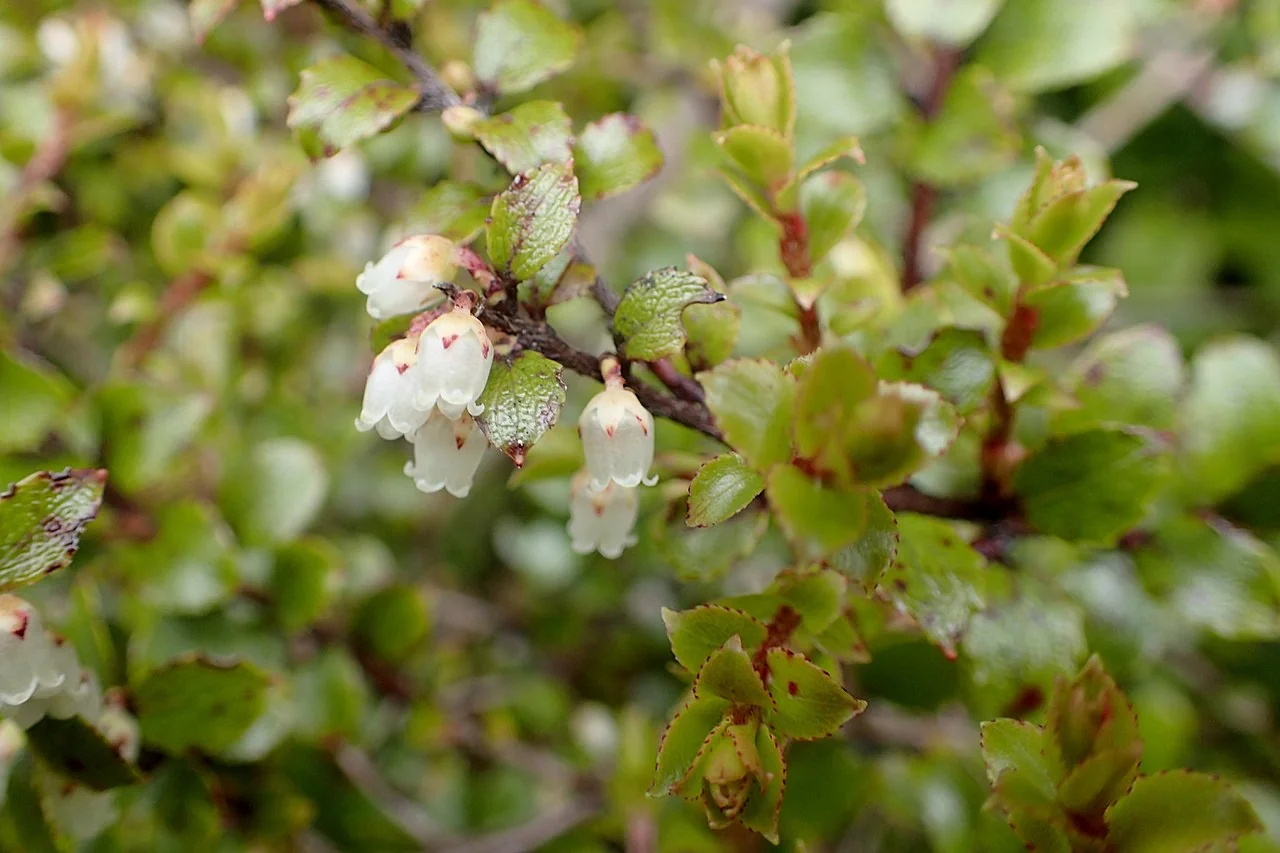
Bush Snowberry
Gaultheria antipoda
Bush Snowberry ( Gaultheria antipoda ) represents one of New Zealand's most adaptable and resilient native shrubs , creating distinctive displays of small white berries that persist through winter months like snow-covered gems scattered across the landscape. This remarkable member of the heath family demonstrates extraordinary ecological versatility, naturally occurring across an impressive altitudinal range from sea level to subalpine zones throughout both the North and South Islands, showcasing evolutionary adaptations that allow it to thrive in coastal salt spray, montane winds, and alpine frosts with equal success. The plant's most charming characteristic lies in its abundant production of pristine white, berry-like fruits that follow delicate pink-tinged bell-shaped flowers, creating a striking contrast against its small, leathery dark green leaves that have evolved to withstand the harsh environmental conditions of its diverse habitats. Found growing naturally in open shrublands, forest margins, rocky slopes, and alpine areas, Bush Snowberry often forms dense, low-growing mats that provide crucial habitat structure for small native birds, lizards, and invertebrates while contributing to the ecological integrity of New Zealand's varied ecosystems. The species plays important ecological roles as both a pioneer species that helps stabilize disturbed soils and as a food source for native fauna, with its berries providing essential nutrition for birds during autumn and winter when other food sources become scarce. Culturally, while not as extensively documented in traditional Māori uses as some other native plants, Bush Snowberry represents the remarkable adaptive radiation that has allowed New Zealand's flora to colonize virtually every available ecological niche across the country's diverse landscapes. In cultivation, this hardy native proves invaluable for gardeners seeking low-maintenance plants that can handle challenging conditions, thriving in rock gardens, alpine plantings, and exposed sites where its natural resilience and year-round ornamental value make it an excellent choice for sustainable native landscaping.

Explore more NZ native plant guides in our index .
Plant Description
Botanical Features
Gaultheria antipoda , commonly known as Bush Snowberry or Fool's Beech, is an evergreen shrub endemic to New Zealand. It typically grows as an upright or spreading plant, reaching heights of 1 to 2 meters. Its leaves are leathery, shiny, and feature small serrations, measuring between 5-15 mm long. The twigs are often hairy, with black hairs mixed with shorter, paler ones. It flowers around November, producing white, bell-shaped flowers that are solitary at the base of the leaves. These are followed by white to red berries in late summer and autumn, which are about 12mm in diameter and have a good, sweet flavor. This species is found in the North Island of New Zealand, particularly in lowland to subalpine scrub habitats, often on cliffs and rocky areas. It prefers moist, humus-rich, lime-free soil and can grow in full or semi-shade.
Quick Facts
| Scientific Name | Gaultheria Antipoda |
|---|---|
| Common Name | Bush Snowberry, Fool's Beech |
| Family | Ericaceae |
| Height | Up to 1 m |
| Spread | Up to 1.5 m |
| Light | Full sun to partial shade |
| Soil | Well-drained, acidic soils |
| Water Needs | Moderate |
| Frost Tolerance | High |
| Salt Tolerance | Moderate |
| Growth Rate | Slow to medium |
| Lifespan | Perennial |
Climate Best Suited to
Bush Snowberry ( Gaultheria antipoda ) is remarkably adaptable, found in a wide range of New Zealand climates from coastal to subalpine and alpine zones. It thrives in cool, moist temperate climates but can tolerate drier conditions once established. Its natural habitat includes open shrublands, forest margins, and rocky slopes, indicating a preference for well-drained sites with good air circulation. It is highly frost-tolerant, making it suitable for colder regions, and can also withstand moderate salt spray in coastal environments.
Regional Suitability
| Whangārei | Ideal |
| Auckland | Ideal |
| Hamilton | Suitable |
| Rotorua | Suitable |
| Tauranga | Ideal |
| Gisborne | Ideal |
| New Plymouth | Ideal |
| Whanganui | Ideal |
| Palmerston North | Suitable |
| Napier | Ideal |
| Wellington | Ideal |
| Nelson | Ideal |
| Christchurch | Suitable |
| Dunedin | Suitable |
| Invercargill | Suitable |
| City | Climate Suitability |
|---|
Natural Habitat
Typical Environments
Understand the natural habitat of Bush Snowberry ( Gaultheria antipoda ), which is found in a wide range of environments across New Zealand, from coastal to subalpine and alpine zones. This section details its geographical distribution, preferred environmental conditions, and the types of ecosystems where it naturally occurs.
- Widespread across New Zealand, from sea level to high altitudes.
- Found in coastal areas, forest margins, shrublands, and rocky alpine slopes.
- Prefers well-drained sites with good air circulation.
- Thrives in full sun to partial shade.
Its broad habitat range highlights its adaptability and resilience, making it a fascinating subject for ecological study.
Plant Conservation
Gaultheria antipoda , commonly known as Bush Snowberry or Fool's Beech, is a plant native and endemic to New Zealand. Its conservation status is currently classified as "Not Threatened" by the New Zealand Threat Classification System (NZTCS), a status it has held in assessments from 2012, 2017, and 2023. Despite its "Not Threatened" status, conservation efforts for Gaultheria antipoda are still considered important for preserving New Zealand's unique biodiversity. These efforts include monitoring wild populations to identify potential threats, protecting the diverse habitats where it naturally occurs, cultivating the plant in gardens to help maintain genetic diversity, and raising public awareness about the importance of endemic species. The plant's wide distribution and adaptability across various New Zealand environments, from coastal to subalpine and alpine zones, contribute to its stable conservation status. Ecologically, Gaultheria antipoda plays a role as a pioneer species, helping to stabilize disturbed soils, and its berries serve as a food source for native birds, aiding in seed dispersal.
Growing Requirements
Soil Requirements
Bush Snowberry thrives in well-drained, acidic soils, reflecting its natural habitat in forest margins and alpine areas. It tolerates a range of soil types from sandy to loamy, but good drainage is crucial to prevent root rot. Incorporating organic matter can improve soil structure and moisture retention, but avoid overly rich or alkaline soils.
- Prefers well-drained, acidic soils.
- Tolerates sandy to loamy soil types.
- Good drainage is essential.
- Avoid overly rich or alkaline conditions.
Light Requirements
Bush Snowberry performs best in full sun to partial shade. In full sun, it tends to be more compact and produce more berries. In partial shade, it may grow a bit leggier but will still thrive. Ensure it receives adequate light for healthy growth and flowering.
- Full sun to partial shade.
- More compact growth and berries in full sun.
- Adaptable to various light conditions.
Water Requirements
Bush Snowberry requires moderate watering, especially during dry periods and its establishment phase. Once established, it is reasonably drought-tolerant but will benefit from occasional deep watering during prolonged dry spells. Ensure the soil is consistently moist but not waterlogged.
- Moderate watering needs.
- Drought-tolerant once established.
- Avoid waterlogging.
Planting Guide
Best Time to Plant
The best time to plant Bush Snowberry is during autumn or spring, when temperatures are mild and rainfall is more consistent. This allows the plant to establish its root system before the extremes of summer heat or winter cold.
Choosing a Location
Select a site with full sun to partial shade and well-drained, acidic soil. It is ideal for rock gardens, alpine plantings, borders, or as a low-growing shrub in native plant landscapes. Ensure it has good air circulation.
Planting Steps
- Dig a hole twice the width of the root ball and the same depth.
- Gently remove the plant from its container, being careful not to disturb the roots.
- Place the plant in the hole, ensuring the top of the root ball is level with the surrounding soil.
- Backfill with amended soil, firming gently around the base of the plant.
- Water thoroughly immediately after planting to settle the soil.
- Apply a light layer of organic mulch to help retain moisture and suppress weeds, keeping it away from the stem.
Initial Care
Water regularly during the first 6-12 months to help establish a strong root system. Once established, Bush Snowberry is reasonably low maintenance and requires less frequent watering. Protect young plants from extreme conditions if necessary.
Ecological Role
Ecosystem Roles
The ecological importance of Bush Snowberry ( Gaultheria antipoda ) within its native New Zealand ecosystems is significant. Its berries provide a valuable food source for native birds, contributing to the local food web and aiding in seed dispersal across diverse habitats.
- Berries provide a food source for native birds, aiding seed dispersal.
- Dense growth offers shelter for small invertebrates and lizards.
- Contributes to the biodiversity of forest margins, shrublands, and alpine zones.
As an endemic species, it is an integral part of the unique biodiversity that has evolved in New Zealand, supporting the delicate balance of its natural habitats.
Uses and Significance
Garden Uses
- Excellent for rock gardens, alpine plantings, and borders.
- Suitable as a low-growing groundcover or small shrub.
- Provides winter interest with its bright white berries.
- Attracts native birds to its fruits.
Cultural Significance
Traditional Uses and Values
Gaultheria antipoda , commonly known as Bush Snowberry or by its Māori names such as Tāwiniwini, holds cultural significance primarily within New Zealand. While its traditional Māori uses are not as extensively documented as some other native plants, it is recognized for several important aspects:
- Māori Names and Identity: The plant is known by various Māori names, including Tāwiniwini, koropukā, korapuka, koropuku, pāpapa, pāpapa-kura, takapō, tapuku or taupuku, tīwai, and tūmingi, reflecting its presence and recognition within Māori culture.
- Traditional Food Source: The berries of Gaultheria antipoda were consumed by Māori. They are described as sweet-tasting when ripe, particularly earlier in the fruiting season (summer/autumn).
- Traditional Medicinal Use: An infusion made from the leaves of the plant, specifically referred to as Tūmingi, was traditionally used to treat asthma.
- Ecological Importance and Heritage: Beyond direct human use, Gaultheria antipoda is an integral part of New Zealand's natural heritage. It symbolizes ecological resilience and contributes significantly to the unique flora of Aotearoa. Its berries serve as a crucial food source for native birds, aiding in seed dispersal, and its dense growth provides shelter for various small invertebrates and lizards.
- Endemic Status: As an endemic New Zealand species, its conservation is vital for preserving the country's unique biodiversity.
Landscaping Applications
Bush Snowberry ( Gaultheria antipoda ) is a highly versatile and attractive plant for various landscaping applications, particularly in native and low-maintenance gardens. Its compact form and striking winter berries make it a valuable asset.
- Ideal for rock gardens, alpine plantings, and front-of-border placements.
- Excellent as a low-growing shrub or groundcover.
- Provides year-round interest, especially with winter berries.
- Suitable for coastal and exposed sites due to its hardiness.
Its ability to thrive in challenging conditions and its aesthetic appeal make it a popular choice for creating resilient and beautiful native landscapes.
Seasonal Care Calendar
Spring
New growth emerges, and delicate bell-shaped flowers may appear. This is an ideal time for planting new Bush Snowberry specimens. Ensure consistent moisture for young plants and protect them from strong winds if necessary. A light feed with a slow-release native plant fertilizer can encourage vigorous growth.
- Ideal time for planting.
- Ensure consistent moisture for new plants.
- Light fertilization if needed.
Summer
Bush Snowberry is actively growing and may produce flowers and developing berries. Consistent watering is important, especially during dry spells, to prevent stress. Monitor for pests and diseases, though it is generally quite resilient.
- Active growth and flowering.
- Consistent watering is essential.
- Monitor for pests and diseases.
Autumn
Berries ripen and become prominent in autumn, persisting through winter. This is another good time for planting, allowing roots to establish before winter. Minimal care is required for established plants, but ensure they remain adequately hydrated.
- Berries ripen and provide winter interest.
- Good time for planting.
- Ensure adequate hydration.
Winter
Bush Snowberry provides excellent winter interest with its persistent white berries. It is highly frost-tolerant and requires minimal care during this period. Ensure good drainage to prevent root issues in wet conditions.
- Provides winter interest with berries.
- Highly frost-tolerant.
- Ensure good drainage.
When to Prune and How Much
Bush Snowberry generally requires minimal pruning. The primary reason for pruning is to remove dead or damaged stems, or to tidy up the plant's appearance. Light trimming can encourage bushier growth.
- Remove dead or damaged stems as needed.
- Light trimming to maintain shape and encourage bushiness.
- Best done in late winter or early spring before new growth.
- Use clean, sharp tools.
Avoid heavy pruning, as this can stress the plant. Its natural compact habit is part of its charm, so allow it to grow naturally.
How to Grow Bush Snowberry
Bush Snowberry is a charming and adaptable native shrub that adds year-round interest to any garden with its small, leathery leaves and abundant white berries. It is a resilient plant, thriving in a wide range of conditions from coastal to alpine zones, making it an excellent choice for rock gardens, borders, and native plantings. While it is a relatively low-maintenance plant, successful cultivation requires attention to its specific needs, particularly regarding well-drained, acidic soil and full sun to partial shade. Understanding its propagation methods is key to successfully growing this delightful species.
From Seed
Propagating Bush Snowberry from fresh seed is a viable method, though germination can be slow and variable. Collect ripe berries in late autumn or early winter. Clean the seeds thoroughly to remove any fleshy pulp. Sow the seeds in a tray filled with a well-draining, acidic seed-raising mix, lightly covering them. The seeds may benefit from a period of cold stratification (placing seeds in a moist medium in the refrigerator for 4-6 weeks) to improve germination rates. Maintain consistent moisture in the seed tray and keep it in a cool, sheltered location. Germination can take several weeks to months, so patience is key. Once seedlings have developed a few true leaves, they can be potted into individual containers and grown in a sheltered environment before planting out.
From Cuttings
Semi-hardwood cuttings are the most reliable and efficient method for propagating Bush Snowberry, ensuring that new plants retain the exact characteristics of the parent. Take 5-10 cm cuttings from healthy, non-flowering stems in late summer or early autumn. Remove the lower leaves and dip the cut end in a rooting hormone. Insert the cuttings into a well-draining propagation mix, such as a blend of perlite and peat. Keep the cuttings in a warm, humid environment, out of direct sunlight, perhaps under a plastic dome or in a propagator. Rooting typically occurs within 6-8 weeks. Once rooted, the new plants can be potted on and grown in a sheltered environment until they are ready for planting.
Pests and Diseases
Bush Snowberry is a remarkably hardy plant and generally resistant to most pests and diseases. Its adaptation to diverse environments means it has few significant natural enemies.
Common Pests
- Generally pest-free.
- Occasionally, aphids or scale insects may appear on new growth, but rarely cause significant damage.
Common Diseases
- Highly resistant to diseases.
- Root rot can occur in poorly drained, waterlogged soils.
- Leaf spot diseases are rare but can occur in very humid conditions.
Good garden hygiene, proper watering, and excellent drainage are key to preventing most pest and disease issues. Healthy, well-sited plants are rarely affected by significant problems.
Bonus Tip
A Berry Rainbow
While the common name 'Snowberry' suggests white berries, the fruit of Gaultheria antipoda can actually vary in colour from pure white to pink and even dark red. This variability adds another layer of interest to this already charming plant, as you may be surprised by the colour of the berries that appear on your plant.
